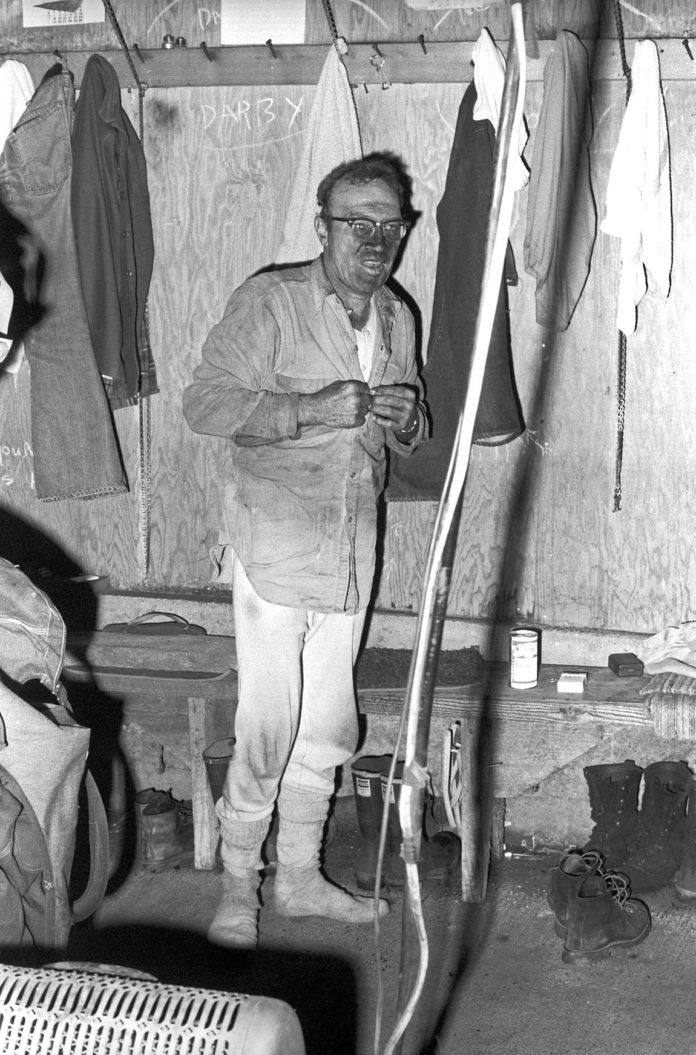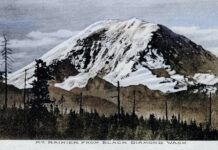Coal mining was dirty work. But coal miners enjoyed a perc not available to many occupations – a hot shower at the end of their shift. Upon arriving at work, miners assembled in the wash house where their mining clothes hung from baskets in the eave of the building. The wash house was usually a simple and unadorned wooden structure with concrete floors and a peaked interior ceiling. In the early days, a coal stove heated the wash house so wet mining clothes from the day before were dry and warm before their next shift began. In later years the coal stove gave way to an electric heater as seen in the lower left of this photo.
There the miners disrobed from street apparel and donned their gear which usually consisted of jeans, flannel shirt, work coat, and long underwear. The temperatures underground were a consistent 52 to 55 degrees Fahrenheit, with a steady flow of circulating fresh air from powerful fans, so long johns were typically worn by the miners. Following a shift of hard labor and blackened faces, the coal miners reassembled in the wash house where three shower heads provided communal bathing, not dissimilar to locker rooms in high schools.
Bill McLoughry was 54 years old, 5’8”, and 150 pounds when this photograph by Barry Kombol was taken in April 1974. It was about 11 pm on the second shift when Bill prepared to shower. His street clothes were hung to the right. Above his shoulder written in chalk is the name Darby, the changing space occupied by Roy Darby who worked cross-shift from McLoughry. Both men were hoist operators meaning they ran the 1” thick steel cable spooled on a six-foot diameter, giant fishing reel-styled drum that pulled five-ton cars of coal out of the mine every six to eight minutes. On the bench to his right is the can of beer he enjoyed after eight hours of labor.
The Rogers No. 3 mine on Kent-Kangley in Ravensdale was a continuation of the Rogers No. 1 mine that opened on the Summit-Landsburg Road in 1958, followed by Rogers No. 2, a year later. Those three entryways to the Rogers coal seam provided access to four levels, each separated by 200 feet, in total reaching a depth of nearly 800 feet underground. Over 17 years, the combined mines produced 493,000 tons of clean coal most of it destined for state institutions like the University of Washington, Shelton Correction Center, Monroe Reformatory, and Rainier School in Buckley. Rogers No. 3 shut down a year and a half after this picture was taken, in December 1975. It was the last underground coal mine to operate in Washington.







